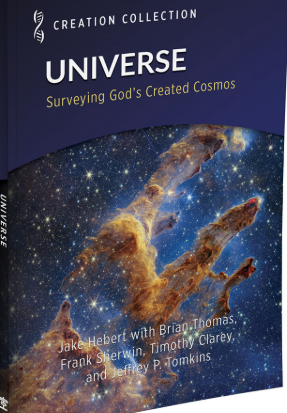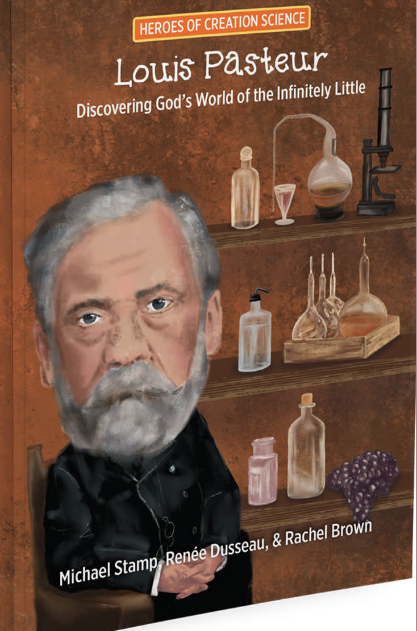Articles » Intermediate
A well known nineteenth century musical comedy features the Mikado, a head of state who knew what he wanted. He wanted to execute people he did not like. Indeed he had a little list of these proposed victims. One of the most amusing solos in the musical is his refrain
- I’ve got a little list
I’ve got a little list
There will none of them be missed
There will none of them be missed! Read the rest of this entry »
Most of us appreciate the word “young”, especially when it is used to describe us. However there is one class of individual that does not particularly like this adjective. These are astronomers. They don’t mind looking young themselves. However they do not want to hear about phenomena in space which appear recent or young. Many astronomers believe that our solar system is billions of years old. There should not be too many phenomena (or any) in space that are of very recent origin. Read the rest of this entry »
Even the date was significant. On Monday, February 12 (the one hundred ninety-second anniversary of Charles Darwin’s birth), two groups of scientists released the results of their continuing studies into the human genome. This date was chosen since it is the understanding of most modern scientists, that details in the genetic code should give us spectacular insights into the process of evolution. But there were many surprises in the data. What did the results mean? Read the rest of this entry »
It seems almost too amazing to contemplate. Measured from its antennae, Pioneer 10 extends less than 3 m (9 feet) and weighs about 270 kg (570 lb.). Its power comes from four nuclear generators each of which provided only 40 watts at launch, 29 years ago. Now that spacecraft is almost 12 billion km alway (7 billion miles). Despite the immense distance and the tiny onboard power source, a message from Pioneer 10 was successfully detected on April 28/01 by a tracking station in Spain. Some people might wonder how signals from Pioneer 10 are recognized from so far away. Apparently there is a new analytical technique based on chaos theory, which may enable scientists to sift real signals out of background noise. Read the rest of this entry »
Truly there are few things as thrilling as beautiful music. Was it not Shakespeare who wrote “If music be the food of love, play on!” Indeed music not only fosters romance, but it can also make us laugh, or cry, or move with the rhythm, or all of the above at once. There are few things which play on our emotions the way music does. Music however is not a gift unique to people. There are other created creatures with wonderful musical talents. Consider the songbirds for example. Read the rest of this entry »
Advance warning of a spectacular media blitz arrived at PBS affiliates as the past school year ended. The memo, dated June 15/01 was entitled “The Evolution Controversy: Use it or Lose it.” According to the memo, the affiliates should prepare not only to promote the eight hour series entitled Evolution, but they were also to promote the very concept of evolution itself. The series would run in September as the new school year began. This project, which was two years in preparation, was co-produced by WGBH Boston (of NOVA fame) and Clear Blue Sky Productions. The program was declared to be a “comprehensive PBS project, not just a television series.” The objective was to reach as many people as possible (including teachers and ten million students over a ten year period). To that end, a feature-rich web site had been prepared as well as a HarperCollins companion book. Among the target audiences the memo listed religious leaders and government officials. These are not usually expected to pay particular attention to general interest science programming. But this was to be no apple pie and motherhood “beauty of nature” sort of show. Indeed one of the “outreach” objectives was to “co-opt existing local dialogue about teaching evolution in schools.” To support this more serious political agenda, the advertising campaign would include television, print media and “guerrilla/viral marketing” whatever that may be (but it doesn’t sound good). Read the rest of this entry »
Among biologists, there have always been mavericks who dared to take a stand for the creation model. Point by point, these scientists have contested evolutionary speculation. But all too often such individuals have seemed like voices crying in the wilderness. The public often perceived creation based arguments as offering little but negativity. It is indeed the case that rearguard skirmishes won’t win a war. What is clearly needed, is a frontal assault on biological thinking. It is time to re-examine the foundations of biology. Thus it was in August 2001 that the Center for Origins Research and Education of Bryan College in Dayton, Tennessee; the Institute for Creation Research in El Cajon, California; and Cedarville University of Cedarville, Ohio — jointly sponsored a conference entitled “Discontinuity: Understanding Biology in the Light of Creation.” Read the rest of this entry »
Were the Russians smart, or what? While their colony in Antarctica was obviously one of superlatives, scarcely anybody envied their choice. Established in 1957 in the southeast sector of the continent, it was 1500 km from the coast and definitely the highest, driest and coldest choice possible. Here, in this interior region, the ice pack was extremely deep so that the elevation of the camp was a lofty 3500 m above sea level. Despite all that ice, the climate was very dry indeed. Some have claimed that dry cold does not feel so intense, but at -89C, (the coldest temperature ever recorded on our planet and observed at this site), such arguments mean nothing. Even a more typical -55C in this vicinity is too cold for comfort. As far as the eye could see at Vostok, as the Russians named their camp, there was nothing but bleak cold whiteness. Almost forty years would pass before the Russians discovered that Vostok offered more than desolation. Read the rest of this entry »
“Everybody” knows, one might suppose, that evolution is about facts and the creation model is about belief. Certainly this was the message of the recent PBS TV series entitled “Evolution” which aired in September 2001. Indeed information sent to all the PBS stations stated this very thing: “All known scientific evidence supports evolution…. New discoveries over the past 150 years have all supported the validity of the theory of evolution.” (PBS Internal Memo. 2001. The Evolution Controversy: Use it or Lose it. Evolution Project / WGBH Boston. p. 5. June 15.) The memo further defined a scientific theory as a “higher level of understanding that ties ‘facts’ together.” (p. 5). As to the creation model, the memo dismissed it as “not science. It is part of a religious belief system…” (p. 6). Such statements and other similar ones over the years have convinced many among the public that science in general and evolution in particular are based on observations from the natural world and thus they are empirically or factually based. The interesting thing is that this is not the modern understanding of science among scientists themselves. They have long since abandoned much concern for actual data. Read the rest of this entry »
In science, the word “serendipity” refers to an unexpected, but happy discovery. Typically what is meant, is a discovery which was not sought but which leads to significant advances in knowledge or technology. Penicillin, for example was a serendipitous discovery by Sir Alexander Fleming in 1928. What he was trying to do, was grow cultures of common bacteria (germs). But what was that pesky mold doing growing in the culture? When Sir Alexander realized that the mold seemed to discourage the growth of the bacteria…. well the rest is history. However, I am not sure that the unlooked for discovery of gigantic sand waves in the Juan de Fuca Strait near Victoria, BC would qualify as serendipitous or not. While they seem to be the biggest and best sand waves known, scientists are apparently not curious enough to study the phenomenon further. Read the rest of this entry »
Spiders look scary and with good reason. They are all predators, you know. Their eight hairy legs and alarming mouth parts would frighten any potential victim. Although the usual victims are insects, even most people are reluctant to get too close to these creatures. Nevertheless, despite their frightening appearance, spiders are actually wonderfully designed organisms. Many species effortlessly produce an amazing product — spider silk. For forty years, scientists working for the American military, have sought to produce something like spider silk. Apparently this material is, by weight, five times stronger than steel. the military would love to use it for bullet proof vests, for parachutes, tents and surgical dressings. Until very recently however, all that the scientists produced was useless blobs. The spider, on the other hand, turns special proteins into as many as seven kinds of silk. The best plan would have been to let the spider do all that for us as well as for herself. Spider farming would have been fine, except that these fierce predators ate each other up. So it was back to the drawing board. Read the rest of this entry »
Fashions come and go. Everyone knows that. Sooner or later today’s “cool” youth find themselves wearing the “geeky” designs that their parents had modeled so many years before. While modern youngsters formerly declared they would not be caught “dead” in such outfits, now that the recycled designs are the new “in-thing,” youth happily look much as their parents did. It’s fun to laugh at these quirks and foibles of human nature. But fashions are not the only thing that we recycle. Scientific explanations have a habit of reappearing just as frequently as old discarded fashions. Explanations concerning mass extinctions are a case in point. Read the rest of this entry »
Science is not everybody’s cup of tea. Most people are busy – and their major interest may be work or family or church related. So why should you or anybody else care about physics or any other science related issue? The fact of the matter is that scientific theories have huge effects on public attitudes. It is always a good idea to keep an eye on current developments. Certainly there are few theories as famous today as the Big Bang. Even some Christian apologists make a special point of supporting long ages and Big Bang cosmology. They may be less inclined to do that in the future. Read the rest of this entry »
Can you imagine a trip to England without a visit to the white cliffs along the south east coast? We couldn’t, so we went. There we stood at the foot of an awe inspiring cliff of sparkling white chalk. Coarse looking, but flat bedding planes divided the towering wall above into endless horizontal layers or strata. It seemed strange however that the shore was covered with hard, rounded pebbles as well as some shiny black fragments with sharp edges rather than white chalk. Closer inspection indicated that the shiny black chunks and the grayish rounded pebbles were of the same material — only the pebbles were rounded and worn by wave action. Now where did these pebbles of hard material come from? When you come to think of it — where did the chalk above come from too? Read the rest of this entry »
Many of us may not realize it yet, but in recent years there has been a dramatic shift in thinking about nature on the part of some cell biologists. Indeed even traditional biotechnology is nothing compared to these new frontiers. In the past, over the millennia, people have wondered about nature and increasingly have applied themselves to finding out how it worked. Once we had some insights, not surprisingly, attempts were made to manipulate nature for mankind’s benefit. Thus we have progressed beyond plant and animal breeding to the insertion of specific pieces of genetic information into target organisms. Some observers have questioned the ethics of these approaches, but the objectives were mainly practical, not philosophically driven. Read the rest of this entry »






